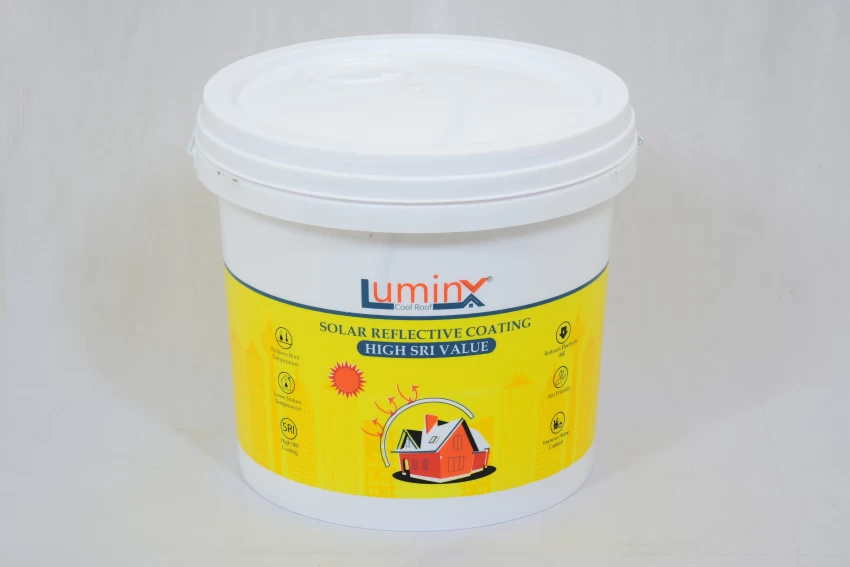In recent years, energy costs have increased, and climate change has become a bigger worry. In reaction, a ground-breaking product was created. Since then, it has swept across the Summer seal paint business. Roof coatings with heat reflectivity offer efficient defence against damaging UV rays. These coatings are made expressly to deflect a large percentage of UV rays from the sun away from the roof surface, keeping them out of the structure. Reduced UV light reaching the roof allows heat-reflective coatings to lessen heat transmission into the building, which lowers cooling bills. Naturally, we are discussing heat-reflecting roof paint. We’ll examine it closely in this article to see if it works.
What Is Heat-Reflective Roof Paint That Reflects Heat?
Using heat-reflecting roof paint helps cool down your roof. The paint’s capacity to reflect solar light is the reason behind this. Drawing out excess heat, it removes solar heat before it enters the building. Better insulation will benefit your building. The use of heat-reflecting paint has several benefits. It shields your roof against corrosion and heat shock, helping maintain it. It also lessens leaking. A heat-reflecting roof might raise your building’s value.
When you apply Best Heat Resistant Paint for Terrace, you’ll find you won’t need air conditioning as much. Your utility costs might be cut by up to 40% or your energy use by 25%. This kind of cool roof paint can extend the life of your structure, making ecologically concerned people’s choice of heat-reflecting paint more sustainable.
How Does Heat-Reflective Roof Paint Work?
Let us first examine how sun energy interacts with Earthly objects to comprehend how heat-reflecting roof paint functions. The sun is the primary energy source. The Best Heat Resistant Paint for Terrace provides invisible and apparent solar radiation. What you see as warm, brilliant sunshine is visible radiation; unseen radiations are UV and infrared rays. All that surrounds you while the sun shines reflects or absorbs the solar radiation it emits. Most of these things will reflect a brilliant colour or release a hot temperature when they absorb light and heat from the sun.
As a result, you feel the intense heat and blinding light coming from everything around you. At this point, heat-reflecting roof paint becomes useful. Its mechanism of operation is to obstruct solar energy’s passage from the roof to your house or place of business. Its function as a mirror reflecting UV rays keeps the structure from absorbing excessive heat, making it more relaxed and more comfortable inside. Imagine your house as a sun shield, shielding you from intense heat. The armour strengthening this shield and reflecting the sun’s unrelenting rays is a roof coating. The Best Heat Resistant Paint for Terrace reflects heat that has several advantages over simple protection.
Why Heat-Reflective Roof Coatings Is So Important?
These coatings offer energy savings and longer roof lifespans, making them worth considering.
- Energy Savings:
When roof coverings are heat-reflective, electricity savings can be substantial. These Best Heat Resistant Paint for Terrace help to reflect sunlight and lessen the heat that the roof absorbs. The roof keeps cooler by reflecting sunlight, which cuts energy usage and the need for air conditioning. In hotter climes or during the summer, when cooling expenses can soar, this is especially helpful. Heat-reflective roof coatings are economical.
- Greater Comfort Inside:
Using heat-reflective roof coatings has several advantages, chief among them being increased indoor comfort. These coatings lessen the heat that enters the building through the roof, improving the comfort of living or working there. Significant solar energy is reflected away from the roof by heat-reflective coatings, keeping it from entering the structure. Lower energy usage and cost savings follow from this lessening of the need for air conditioning.
- Improved thermal insulation:
Furthermore, Summer seal paint adds a layer of thermal insulation to the roof. Keeping heat inside during colder months and out of the house during hotter months helps preserve a more constant indoor temperature. These coatings can result in significant electricity bill savings by lowering the amount of energy required to cool a structure. Reduced energy use also helps to leave less of a carbon imprint. Less electricity means less fossil fuels are used, lessening the effects of climate change.
- Better temperature management:
Heat-reflective coatings help produce a more constant and comfortable indoor temperature by lowering the amount of heat entering the building. This guarantees a better living or working environment and eliminates temperature swings.
- Cutback on heat island effect:
Additionally, heat-reflective coatings help lessen the urban heat island effect—a phenomenon in which cities have greater temperatures because of heat absorption and retention. By reducing the heat island effect, these coatings help to chill and soothe the surrounding surroundings by reflecting solar energy back into the atmosphere. The new “Excel Cool Coating” reflects heat and makes roofs and walls more energy efficient, reducing urban heat.
- UV Protection:
UV rays can eventually seriously harm roofs. Rooftop materials like shingles and membranes can deteriorate after extended UV exposure. Coatings that reflect heat function as a barrier to protect the roof from UV radiation damage. Building owners can avoid expensive repairs or replacements by extending the life of their roofs using this heat damage prevention. Heat-reflective coatings shield the roof and add greater comfort inside. The new Excel Cool Coating reflects heat and makes roofs and walls more energy-efficient to reduce urban heat.
- Improved waterproofing:
Seamless barriers formed by heat-reflective coatings help stop water from seeping in. These treatments extend the life of the roof by lowering the possibility of water damage. Furthermore, the coating’s reflecting qualities help maintain a cooler roof surface, which lowers the possibility of ponding water and the development of algae or other organisms.
- Cut back on maintenance requirements:
Heat-reflective coatings can greatly reduce the need for roof care by shielding the roof from UV light and reducing thermal stress. Building owners can save money and effort by continuing roof care with fewer repairs and inspections needed.
Conclusion Moreover, applying eco-friendly materials to heat-reflective roof coatings generally helps to lower their environmental impacts. Often constructed of recycled or carbon-neutral materials, these coatings are a more environmentally responsible choice than conventional roof coatings. Selecting heat-reflective roof coatings allows building owners to support sustainability initiatives and actively improve the environment. Compare Excel cool coat vs. Luminx heat-reflective qualities, durability, and application ease.




